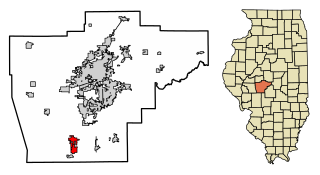
Auburn is a city in Sangamon County, Illinois, United States. The population was 4,771 at the 2010 census, and 4,681 in 2018. It is part of the Springfield, Illinois Metropolitan Statistical Area.

New Palestine is a town in Sugar Creek Township, Hancock County, Indiana, along Sugar Creek. The population was 2,055 at the 2010 census.
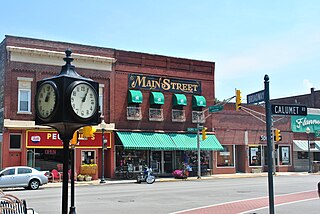
Chesterton is a town in Westchester, Jackson and Liberty townships in Porter County, in the U.S. state of Indiana. The population was 14,241 at the 2020 Census. The three towns of Chesterton, Burns Harbor, and Porter are known as the Duneland area.

Blairsville is a borough in Indiana County, Pennsylvania, United States, located 42 miles (68 km) east of Pittsburgh, and on the Conemaugh River. As of the 2020 census it had a population of 3,252.

Inwood is a census-designated place (CDP) in Berkeley County, West Virginia, United States, located south of Martinsburg in the lower Shenandoah Valley. The population was 2,954 at the 2010 census. It is located on U.S. Route 11.

Rural Free Delivery (RFD), since 1906 officially rural delivery, is a program of the United States Post Office Department to deliver mail directly to rural destinations. The program began in the late 19th century. Before that, people living in rural areas had to pick up mail themselves at sometimes distant post offices or pay private carriers for delivery.
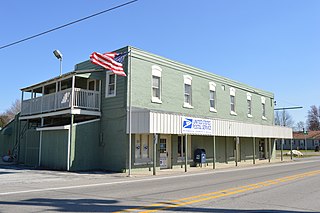
Maxwell is an unincorporated community in Center Township, Hancock County, Indiana.
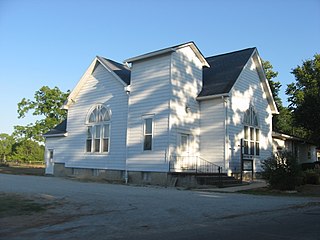
Charlottesville is an unincorporated community in Hancock and Rush counties in the U.S. state of Indiana. The Hancock County portion is in Jackson Township, while the Rush County portion is in Ripley Township.

Riverside is a small unincorporated community on the border of Davis Township and Logan Township in Fountain County, Indiana, United States.

Brandywine Township is one of nine townships in Hancock County, Indiana, United States. As of the 2010 census, its population was 2,392 and it contained 892 housing units.
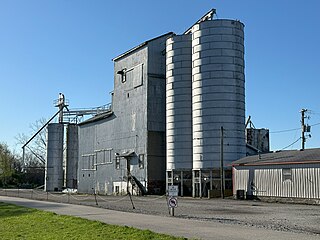
Hazelrigg is an unincorporated town in Jefferson Township, Boone County, in the U.S. state of Indiana.
Pickard is an unincorporated community in Sugar Creek Township, Clinton County, Indiana. The community is named for Jacob Pickard who operated a sawmill at the site.
Carrollton is an unincorporated community in Brandywine Township, Hancock County, Indiana.
Mount Comfort is an unincorporated community in Buck Creek Township, Hancock County, Indiana.
Wesley is an unincorporated community in Wayne Township, Montgomery County, in the U.S. state of Indiana.
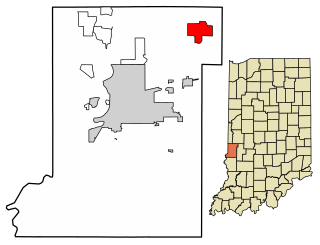
Fontanet is an unincorporated census-designated place in central Nevins Township, Vigo County, in the U.S. state of Indiana. It lies along Baldwin St., northeast of the city of Terre Haute, the county seat of Vigo County. Its elevation is 614 feet (187 m), and it is located at 39°34′34″N87°14′37″W. Although Fontanet is unincorporated, it has a post office, with the ZIP Code of 47851.
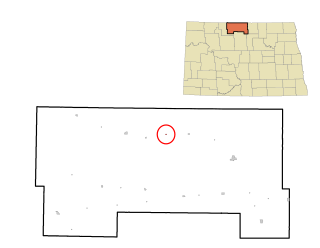
Roth is an unincorporated rural hamlet in Bottineau County in the U.S. state of North Dakota. It is located roughly 6 miles (9.7 km) to the west of Souris. There are less than half a dozen houses at Roth along a loop road, and no businesses or services.
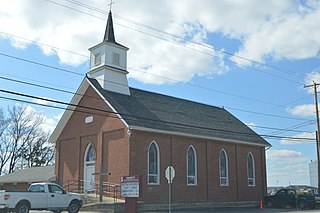
Lilly Chapel is an unincorporated community in Fairfield Township, Madison County, Ohio, United States. It is located at the intersection of W. Jefferson Kiousville Road and Lilly Chapel Georgesville Road, approximately three miles west of Georgesville.

Hitchcock is an unincorporated community in Washington Township, Washington County, in the U.S. state of Indiana.
Fisk is an unincorporated community or ghost town in Adair County, Iowa, United States.

















